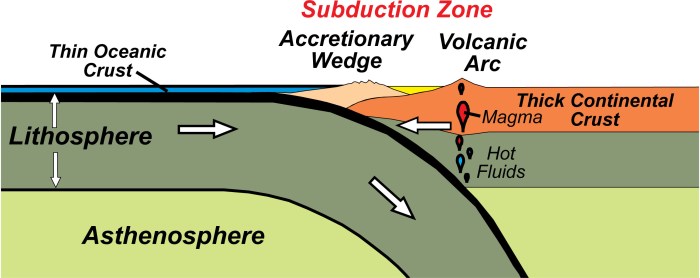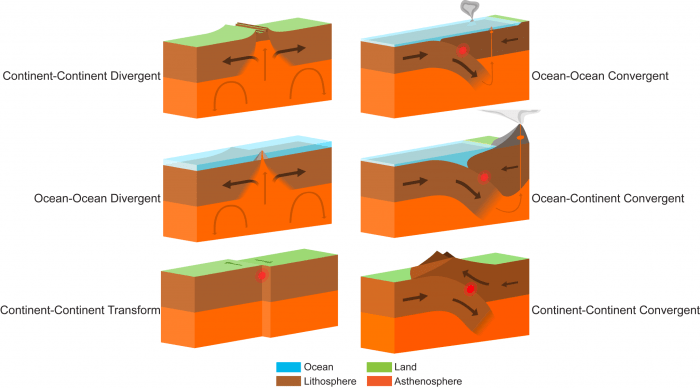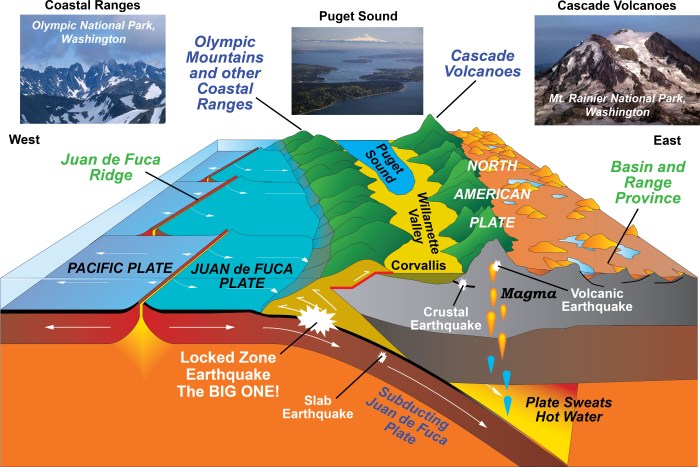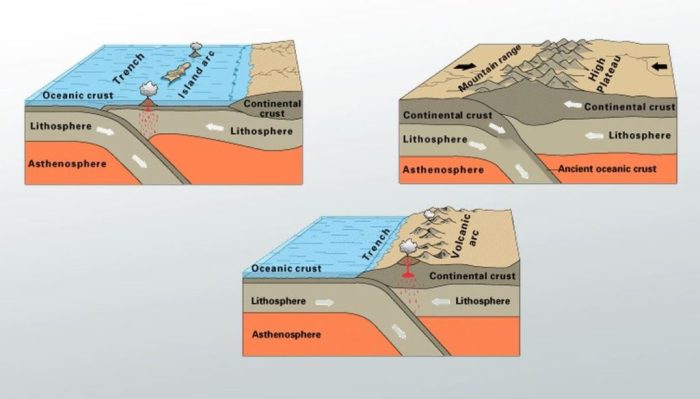Order events chronologically that can lead to a subduction-related tsunami – The chronological order of events leading to a subduction-related tsunami is a complex and fascinating process that involves a series of geological phenomena. This article will delve into the intricacies of these events, providing a comprehensive understanding of the mechanisms behind this devastating natural hazard.
Subduction-related tsunamis are triggered by the sudden displacement of the seafloor during an earthquake. The convergence of tectonic plates and the accumulation of strain energy along plate boundaries are the primary factors that initiate this process. The resulting earthquake generates powerful seismic waves that travel through the Earth’s crust and trigger the vertical displacement of the seafloor, displacing a massive volume of water and generating a tsunami.
Subduction-Related Tsunamis: Order Events Chronologically That Can Lead To A Subduction-related Tsunami

Tsunamis related to subduction events are among the most powerful and destructive natural hazards on Earth. They are caused by the sudden vertical displacement of the seafloor during a subduction earthquake, which transfers a massive amount of energy to the water column.
This energy is then propagated across the ocean basin in the form of tsunami waves, which can travel thousands of kilometers and cause widespread devastation when they reach land.
Precursory Events, Order events chronologically that can lead to a subduction-related tsunami
The sequence of geological events that lead to a subduction-related tsunami begins with the convergence of two tectonic plates. As one plate subducts beneath the other, it accumulates strain energy along the subduction zone. Over time, this strain energy builds up until it is released in the form of an earthquake.
The magnitude of the earthquake is a key factor in determining the size and destructive potential of the resulting tsunami.
Tsunami Generation
When a subduction earthquake occurs, the sudden vertical displacement of the seafloor causes a massive transfer of energy to the water column. This energy is then propagated across the ocean basin in the form of tsunami waves. Tsunami waves are characterized by their long wavelength and high amplitude, which can reach tens of meters in height.
Tsunami Propagation
Tsunami waves propagate across the ocean basin at speeds of up to 800 kilometers per hour. The speed and direction of the waves are influenced by the water depth and bathymetry of the ocean floor. As the waves approach land, they may refract, reflect, or diffract, which can alter their direction and intensity.
Coastal Impact and Hazards
When a tsunami reaches land, it can cause widespread flooding, erosion, and structural damage. The impact of a tsunami can be particularly devastating in low-lying coastal areas, where the waves can inundate entire communities. Tsunamis can also pose a significant risk to human life, as they can cause drowning, injuries, and disease.
Historical Examples
Throughout history, there have been numerous devastating subduction-related tsunamis. One of the most well-known examples is the 2004 Indian Ocean tsunami, which was triggered by a magnitude 9.1 earthquake off the coast of Sumatra. The tsunami killed over 230,000 people in 14 countries.
Mitigation and Preparedness
There are a number of strategies and measures that can be implemented to mitigate the risks associated with subduction-related tsunamis. These include early warning systems, evacuation plans, and coastal engineering structures. Public education and awareness are also essential components of tsunami preparedness.
FAQ Summary
What are the warning signs of a subduction-related tsunami?
Unusual seismic activity, sudden seafloor deformation, and rapid sea level changes can indicate an impending subduction-related tsunami.
How can we mitigate the risks associated with subduction-related tsunamis?
Early warning systems, evacuation plans, coastal engineering structures, and public education are essential measures for mitigating tsunami risks.


